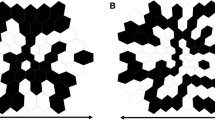Abstract
Background
Scattering of blood flow data as assessed with laser Doppler flowmetry (LDF) in humans is a problem in many studies using this technique. We set out to reduce variability in LDF data by eliminating the effect of the total returning light level (DC) on LDF parameters in the choroid through partial regression analysis.
Methods
In 20 healthy subjects, choroidal blood flow parameters were measured at different DC values using a portable confocal LDF device. We used two different strategies to reduce scattering of data eliminating the effect of yield, which is defined as DC/gain. On the one hand, we used a previously described method based on a third-order polynomial fit, which combines all obtained data. On the other hand, we applied a new method based on a linear fit for each individual subject.
Results
Variability of data during changes in DC is higher for LDF parameters volume and flow than for velocity. Both methods were successful in reducing scattering of LDF parameters with varying DC.
Conclusions
The present study indicates that both methods to correct for changes in yield were successful in reducing the variability of LDF measurements. When systematic changes in DC occur after an intervention, one needs to be careful in interpreting the obtained data and it remains to be shown if either of the two techniques is capable of correcting for this effect. The approach presented here may, however, represent an effective, easily applicable and valid approach to reduce scattering of data from using LDF to assess blood flow in the posterior pole of the human eye.



Similar content being viewed by others
References
Riva CE, Harino S, Petrig BL, Shonat RD (1992) Laser Doppler flowmetry in the optic nerve. Exp Eye Res 55:499–506. doi:10.1016/0014-4835(92)90123-A
Riva CE, Cranstoun SD, Grunwald JE, Petrig BL (1994) Choroidal blood flow in the foveal region of the human ocular fundus. Invest Ophthalmol Vis Sci 35:4273–4281
Michelson G, Schmauss B, Langhans MJ, Harazny J, Groh MJ (1996) Principle, validity, and reliability of scanning laser Doppler flowmetry. J Glaucoma 5:99–105
Geiser MH, Diermann U, Riva CE (1999) Compact instrument for laser Doppler flowmetry in the foveal region of the choroid. Biomed Opt 4:459–464. doi:10.1117/1.429960
Geiser MH, Riva CE, Dorner GT, Diermann U, Luksch A, Schmetterer L (2000) Response of choroidal blood flow in the foveal region to hyperoxia and hypercapnia. Curr Eye Res 21:669–676. doi:10.1076/0271-3683(200008)21:2;1-V;FT669
Gugleta K, Orgul S, Flammer I, Gherghel D, Flammer J (2002) Reliability of confocal choroidal laser Doppler flowmetry. Invest Ophthalmol Vis Sci 43:723–728
Hosking SL, Embleton S, Kageman L, Chabra A, Jonescu-Cuypers C, Harris A (2001) Detector sensitivity influences blood flow sampling in scanning laser Doppler flowmetry. Graefes Arch Clin Exp Ophthalmol 239:407–410. doi:10.1007/s004170100283
Bonner R, Nossal R (1990) Principles of laser-Doppler flowmetry. In: Sheperd AP, Öberg PÅ (eds) Laser-Doppler blood flowmetry. Vol. 107 of Developments in Cardiovascular Medicine. Kluwer Academic Publishers, Boston, Mass, pp 17–45
Riva CE (2001) Basic principles of laser Doppler flowmetry and application to the ocular circulation. Int Ophthalmol 23:183–189. doi:10.1023/A:1014433913240
Longo A, Geiser M, Riva CE (2000) Subfoveal choroidal blood flow in response to light-dark exposure. Invest Ophthalmol Vis Sci 41:2678–2683
Riva CE, Hero M, Titze P, Petrig B (1997) Autoregulation of human optic nerve head blood flow in response to acute changes in ocular perfusion pressure. Graefes Arch Clin Exp Ophthalmol 235:618–626. doi:10.1007/BF00946937
Kiel JW (1994) Choroidal myogenic autoregulation and intraocular pressure. Exp Eye Res 58:529–543. doi:10.1006/exer.1994.1047
Kiel JW, van Heuven WA (1995) Ocular perfusion pressure and choroidal blood flow in the rabbit. Invest Ophthalmol Vis Sci 36:579–585
Koss MC (1998) Role of nitric oxide in maintenance of basal anterior choroidal blood flow in rats. Invest Ophthalmol Vis Sci 39:559–564
Fitzgerald ME, Gamlin PD, Zagvazdin Y, Reiner A (1996) Central neural circuits for the light-mediated reflexive control of choroidal blood flow in the pigeon eye: a laser Doppler study. Vis Neurosci 13:655–669
Author information
Authors and Affiliations
Corresponding author
Additional information
This study was not sponsored by an organization, therefore no financial relationship exists for any author. The authors have no proprietary or financial interest in any aspect of this study.
They have full control of all primary data and agree to allow Graefes Archive for Clinical and Experimental Ophthalmology to review their data upon request.
Rights and permissions
About this article
Cite this article
Pemp, B., Maar, N., Weigert, G. et al. Strategies for reducing variance in laser Doppler flowmetry measurements. Graefes Arch Clin Exp Ophthalmol 247, 67–71 (2009). https://doi.org/10.1007/s00417-008-0942-0
Received:
Revised:
Accepted:
Published:
Issue Date:
DOI: https://doi.org/10.1007/s00417-008-0942-0




